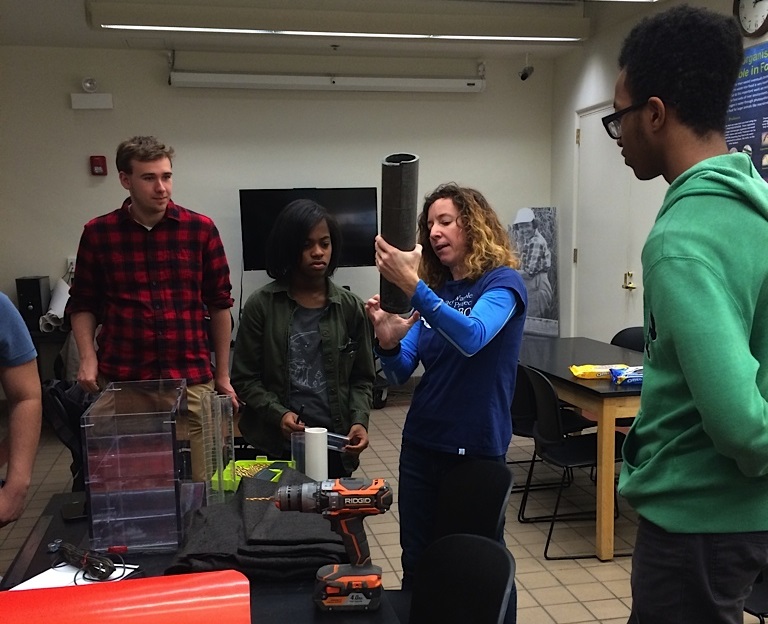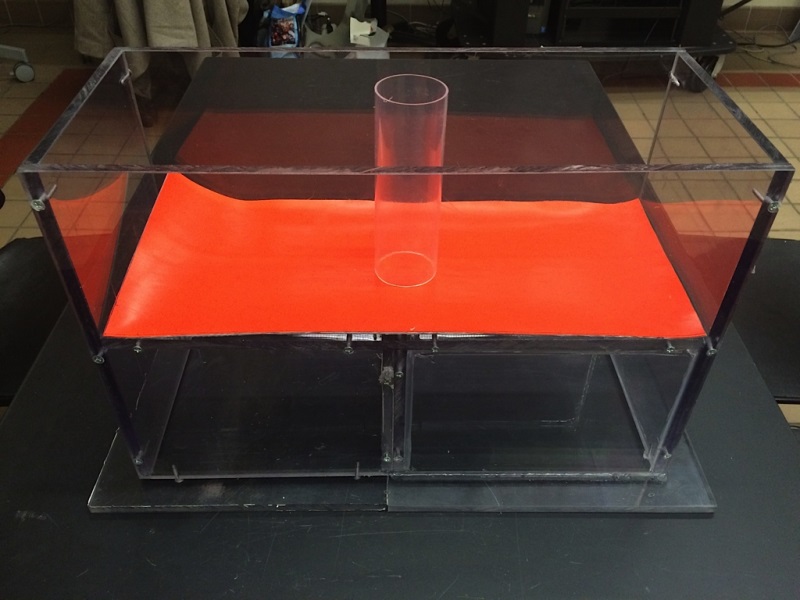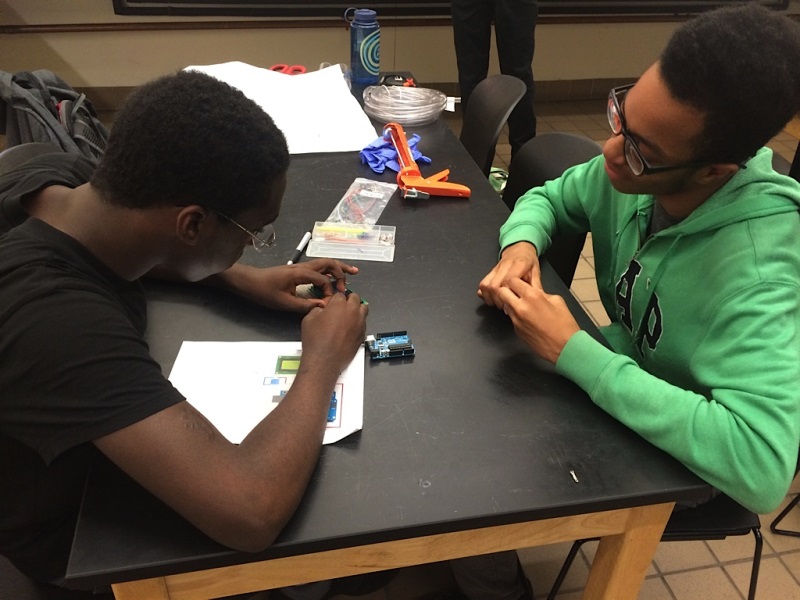Smart Green Roof Project: Chapter 2

This spring, greenSTEM is delighted to have guest bloggers! We’re working with the Fairmount Water Works and high school students from SLA Beeber to create a smart green roof model using microcontrollers and sensors.
After researching green roofs and getting some exposure to Arduino programming, we are beginning to build the model. Kevin Magerr, an engineer with the Environmental Protection Agency (EPA), delivered the skeleton of the model: an acrylic box with different compartments for the soil/plants, electronics, and a water pump. Also joining us was Cara Albright, a PhD candidate with the Villanova Urban Stormwater Partnership. These experts helped guide the model’s development.
- “We got our green roof model and it looks amazing. Kevin, an EPA engineer, and Cara, a student at Villanova University, helped us make plans for our green roof model.”—Tyheim

One way to monitor the effectiveness of a green roof is to look at how much water it can hold. Above, we plan to install a tube that acts as a well in the system. It will fill up with water and we can use an ultrasonic distance sensor to capture the level of water in the well. We talked about how the sensor works—it uses sound signals that bounce off the surface of the water, operating much the same way a bat uses echolocation to detect its surroundings—and experimented with different sizes of tubes to determine the most accurate measurements.

Helpful links:
Ultrasonic (ping) sensor tutorial and code
LCD display tutorial and code
